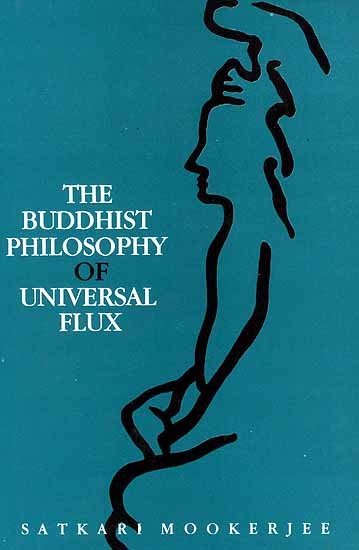The Buddhist Philosophy of Universal Flux
by Satkari Mookerjee | 1935 | 152,014 words | ISBN-10: 8120807375
A systematic and clear presentation of the philosophy of critical Realism as expounded by Dignaga and his school. The work is divided into two parts arranged into 26 chapters. Part I discusses the Nature of Existence, Logical Difficulties, Theory of Causation, Universals, Doctrine of Apoha, Theory of Soul and Problem of After-life. Part II deals wi...
Chapter XIII - The Theory of Soul based on the Upaniṣads
The Vedāntists, who hold to the doctrine of absolute monism, consider the world of reality as an unsubstantial appearance floating over an eternal spiritual principle, which is absolutely homogeneous and destitute of all distinctions, subjective or. objective whatsoever. As the Absolute Brahman, which is pure consciousness and pure existence, is the only reality and the multiplicity of the phenomenal world, both subjective and objective, is only an appearance as unsubstantial and linrealās an illusion or a dream, there can be no distinctions—external or infernal in the spirit, which is one, uniform, unchanged and unchangeable, homogeneous Being. The subject-object distinctions are thus purely fictitious, as the objects have no reality outside the Absolute Consciousness.
The Buddhist idealist (vijñānavādin) holds to an analogous doctrine as according to him also the objective world has no reality whatsoever outside the thinking minds. The subjēct object distinctions are equally false creations of the conscious principle. But though thus they are fundamentally agreed on the reality of consciousness alone, they differ in a very material respect. The Vedāntists are certainly wrong in holding this consciousness to be a homogeneous, unitary principle. If this consciousness were one eternal substance, then why should there be any diversity in our ideas? Certainly colour-consciousness is not the same thing as sound-consciousness and if they are different, you connot consistently hold the doctrine of unitary, eternal consciousness. If they had been one and eternal, all these diverse cognitions should arise all at once and. not in a graduated scale as they are found to do. Nor can these different cognitions be regarded as so many modes or determinations of one eternal consciousness, because modes cannot be regarded as absolutely distinct from the substance and so the substance will vary with its modes. The result will Be a multiplicity of conscious units, which is our (Buddhists’) position.
Moreover, no line of demarcation can be drawn between cognitions and.consciousness as such, as they are found in experience to be absolutely indivisible. And if the diverse cognitions are distinct from one another, what is there to be conceived as one? The Vedāntist position of one eternal consciousness, on the other hand, renders bondage and liberation absolutely impossible. If bondage be its essential nature, there can be no emancipation and if consciousness is eo ipso emancipated, bondage will become equally untenable. But in the Buddhist theory, no such contingency arises, as in a consciousness-series, each moment of consciousness being absolutely different and distinct, there is no incompatibility if one moment is impure and another is divested of its impurity. The fact of the matter is that bondage is nothing but consciousness as defiled by pnssions and ignorance, and emancipation is nothing but consciousness in its native purity, purged of all impurities, by a course of rigorous discipline. Had bondage or emancipation been eo ipso the nature of consciousness, all discipline would have been unavailing.[1] If, however, bondage and liberation be held to be false superimpositions of ignorance, a praxis of yogic discipline will be devoid of all purpose, because there will be nothing to avoid or to attain. So ths theory of the eternal consciousness is logically absurd and ethically a dangerous doctrine.[2]
Footnotes and references:
[1]:
tathā hi—yadi(?) viparyastasvabhāvam ekaṃ jñānaṃ sadā, tadā parasyā ’vasthāntarasyā ’bhāvāu na mokṣavyavasthā syāt. athāviparyastaṃ tadā nityaṃ pariśoddhasvabhāvatvān na bandhaḥ syāt. asmākaṃ tu santānabhedena vijñaptiḥ saṃkliṣṭā śuddhā ce ’ṣyata iti yuktā bandbamokṣa. vyavasthā yatho ’ktam—“saṃkliṣṭā ca viśuddbā ca samalā nirmalā ca sā | saṃkliṣṭā ced bhaven nā ’sau muktāḥ syuḥ sarvadehinaḥ | viśuddhā ced bbaven nā ’sau vyāyāmo niṣphalo bhavet”—iti.
T. S. P., p. 124.
[2]:
kiṃ vā nivartayed yogī yogābbyāsena sādhayet |
kiṃ vā na hātuṃ śakyo hi viparyāsas tadātmakaḥ |
tattvojñānaṃ na co ’tpādyeṃ tādātmyāt sarvadā sthiteḥ |
yogābbyāso’pi tenā ’yam aphalaḥ sarva eva ca |
T. S., śls. 334-335.
